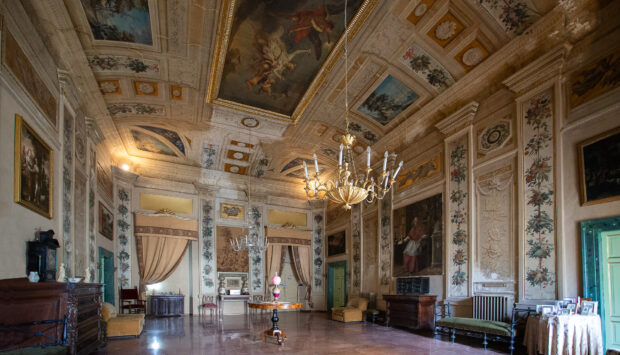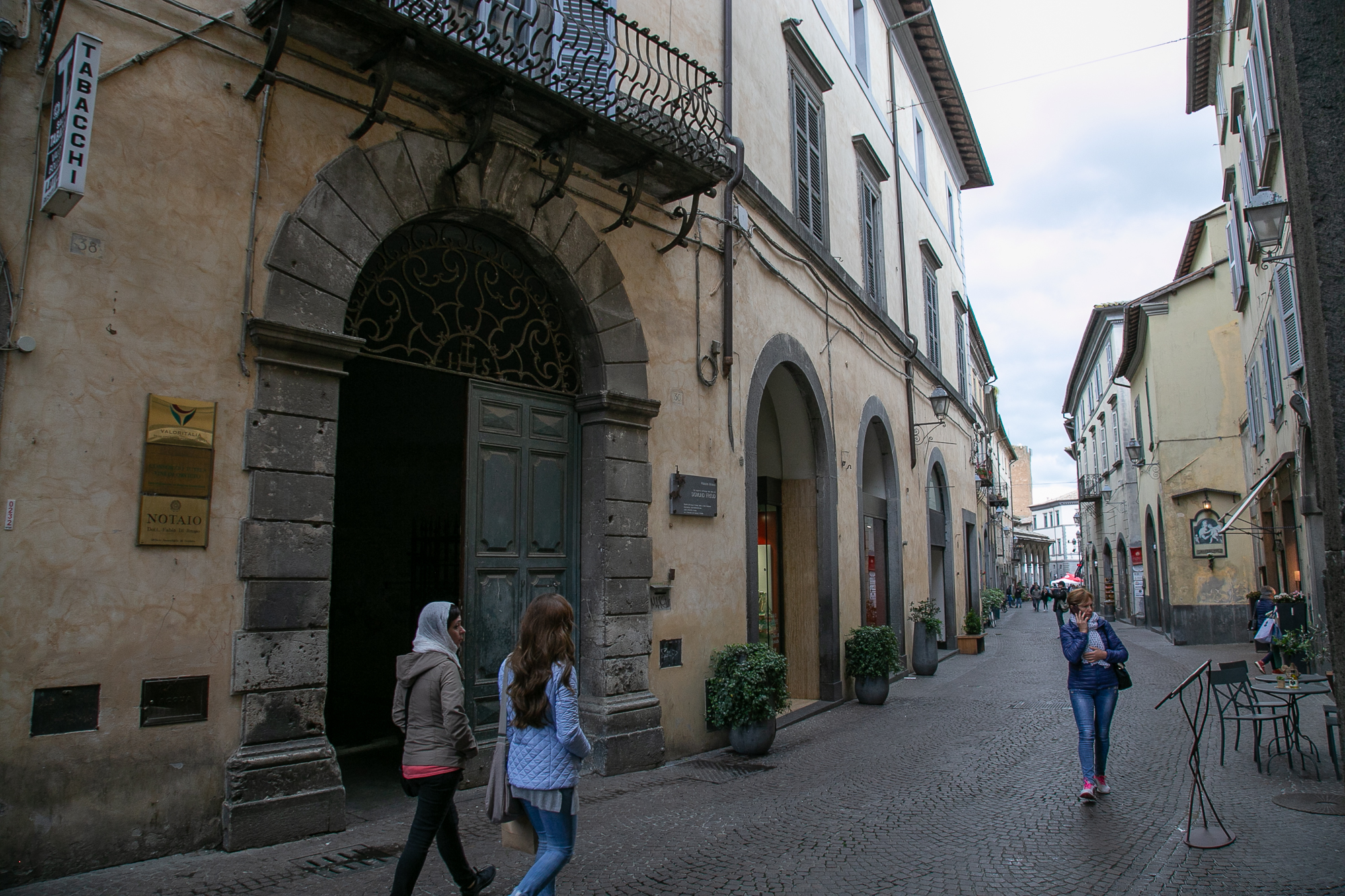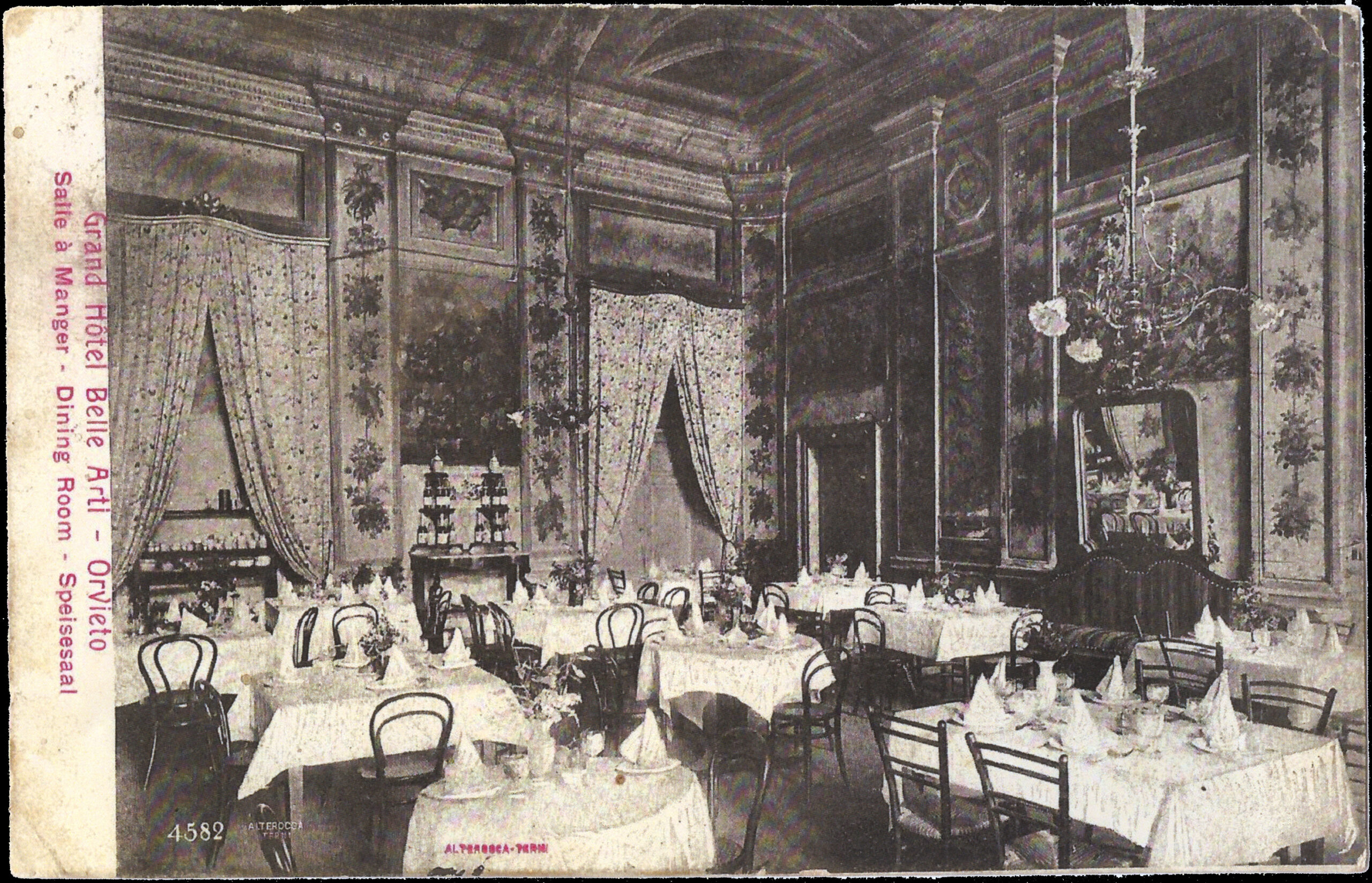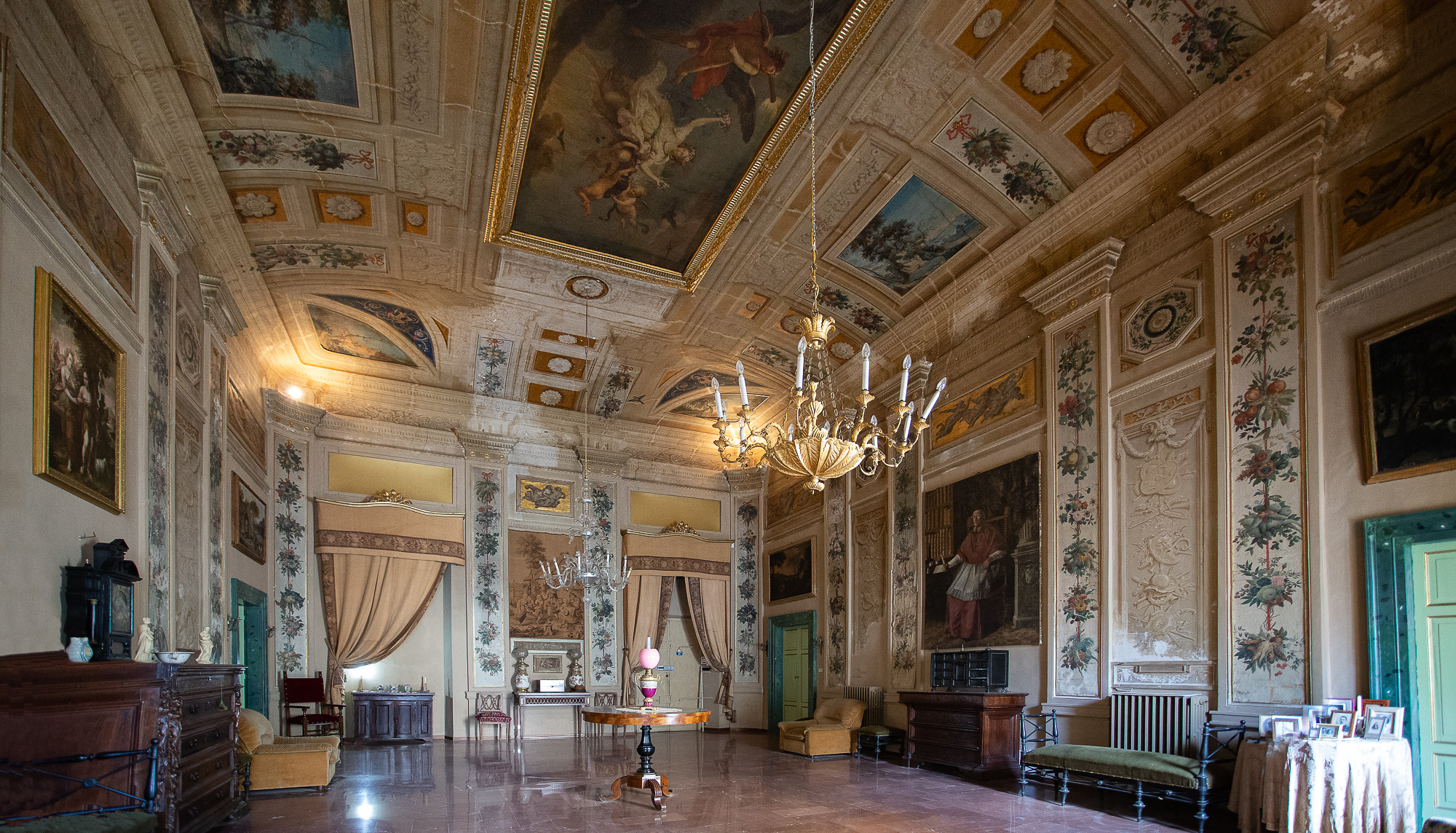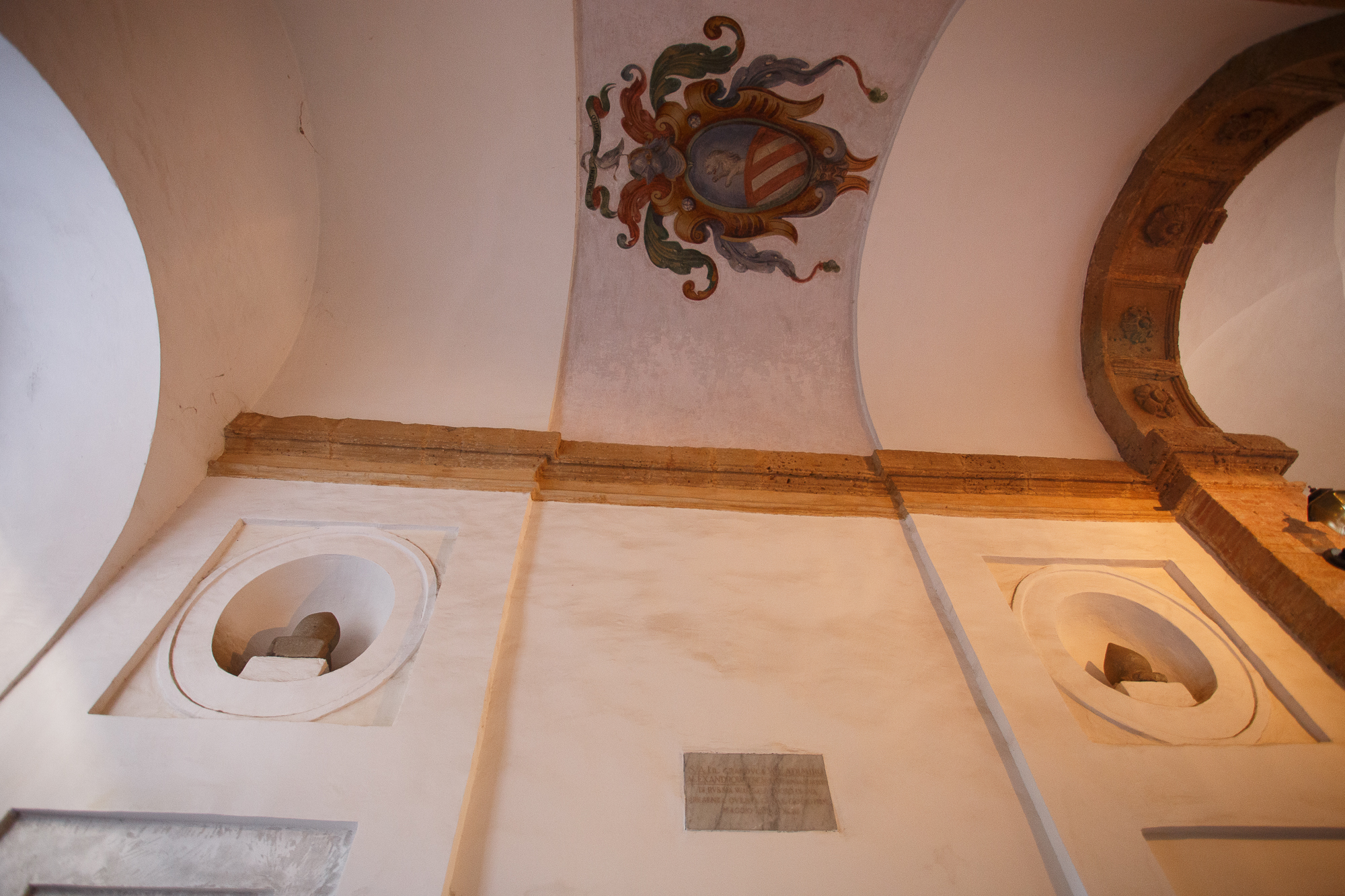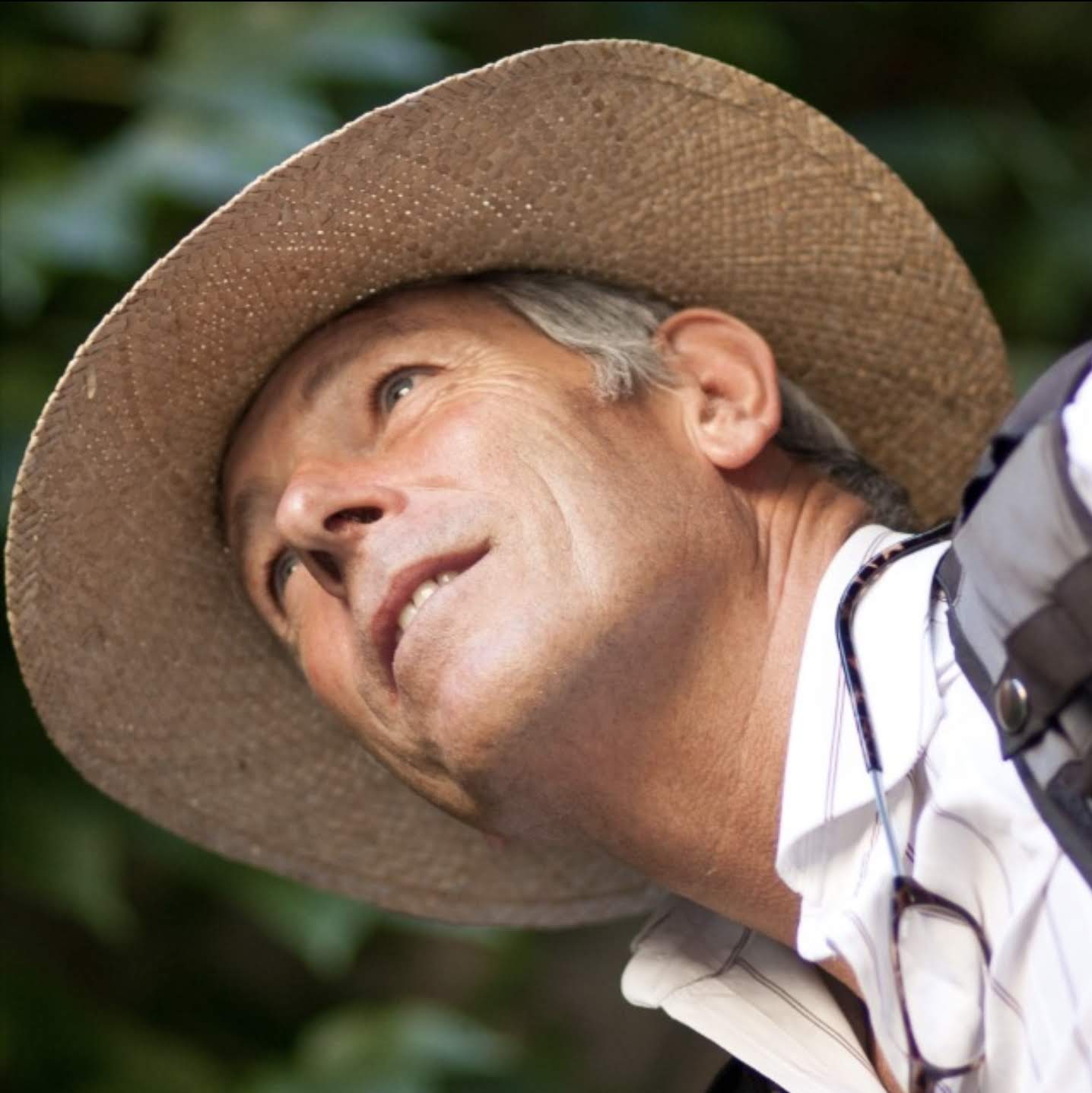On his three visits to Orvieto, Freud always stayed in the comfortable Hotel delle Belle Arti on Corso Cavour in the town center, midway between Piazza Vittorio Emmanuele (now Piazza Repubblica) and the central clock tower, La Torre del Moro. There is a plaque. There were then 7,300 inhabitants, about three thousand more than now inhabit the old town.
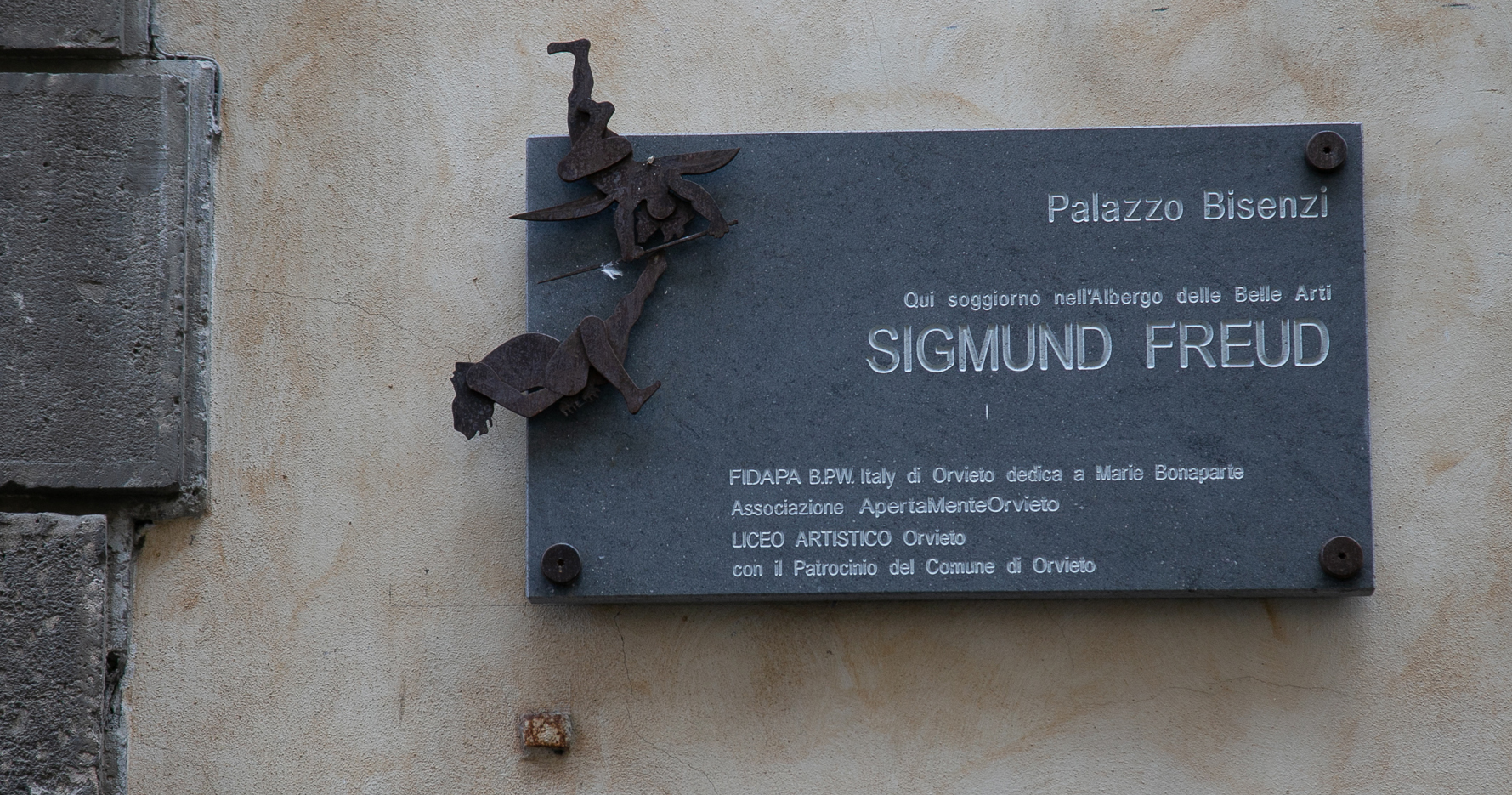
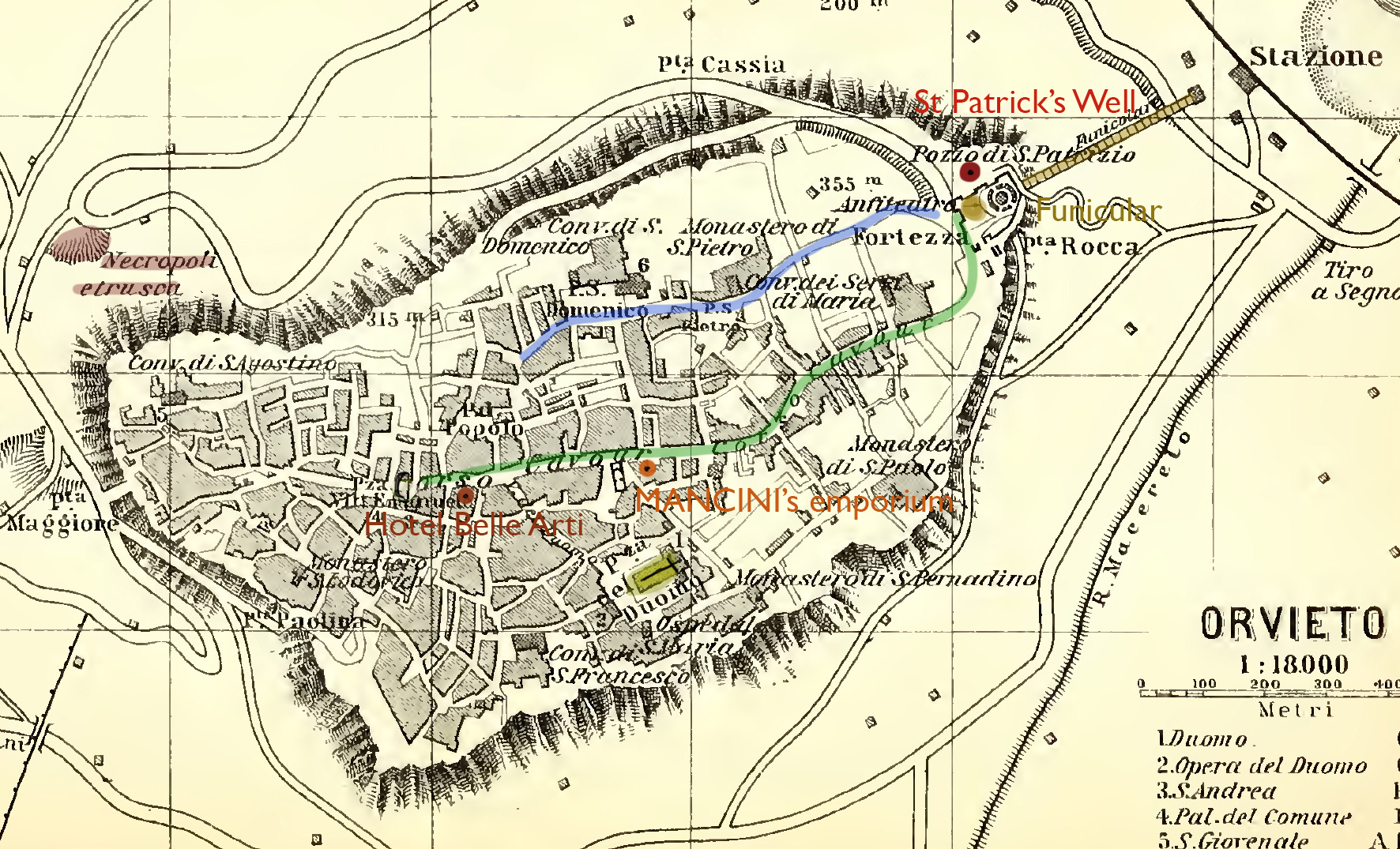
Baedeker Map 1897. Freud arrived by Funicular (top right) which lies next to St Patrick’s Well. Blue path shows Via di Pozzo di San Patrizio (now Via Roma). Green, Corso Cavour, showing Hotel Belle Arti and Mancini’s emporium (130 Corso Cavour) where Freud bought his antiquities. Mancini also owned the Etruscan Necroplis (top left) which lay below the rock walls. Freud mentions his necropolis dream in The Interpretation of Dreams. (1900).
-
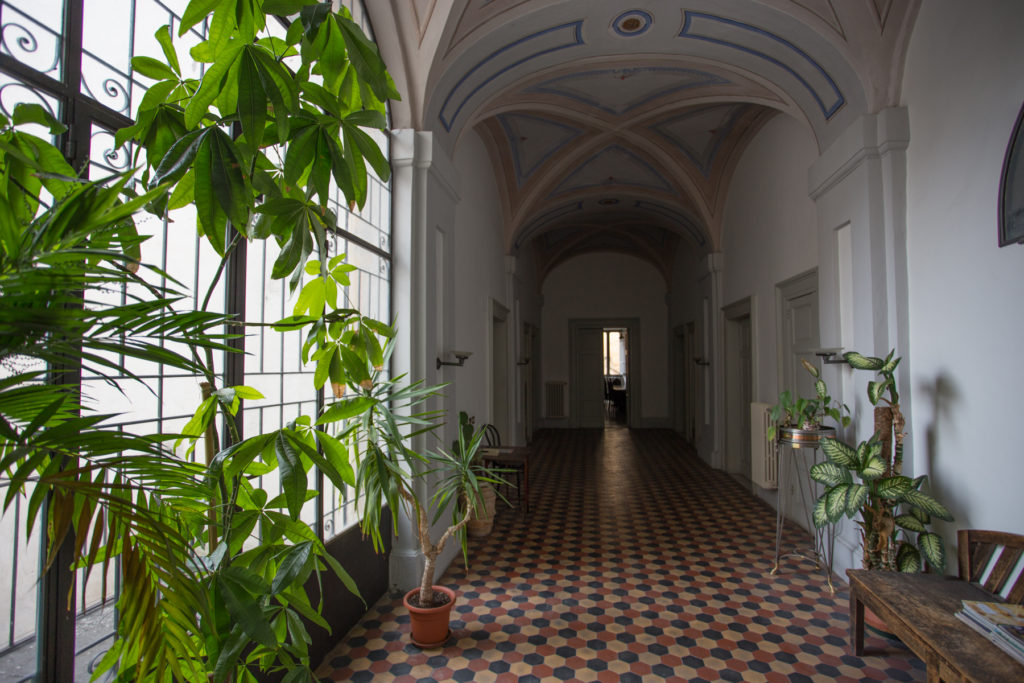
former hotel lobby -
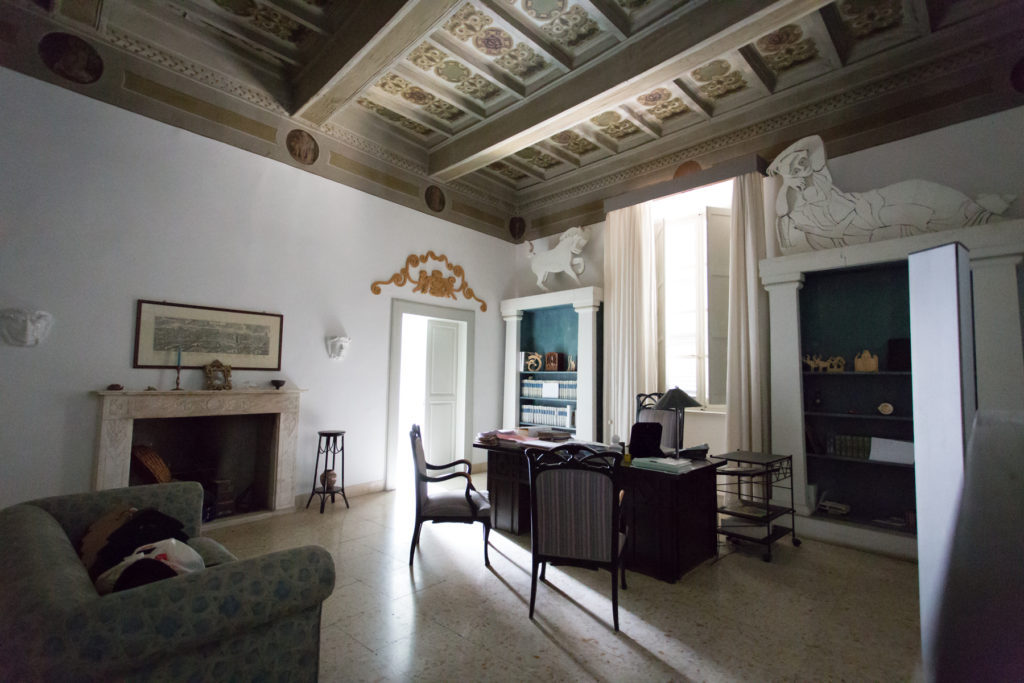
former hotel room, now a lawyer’s office -
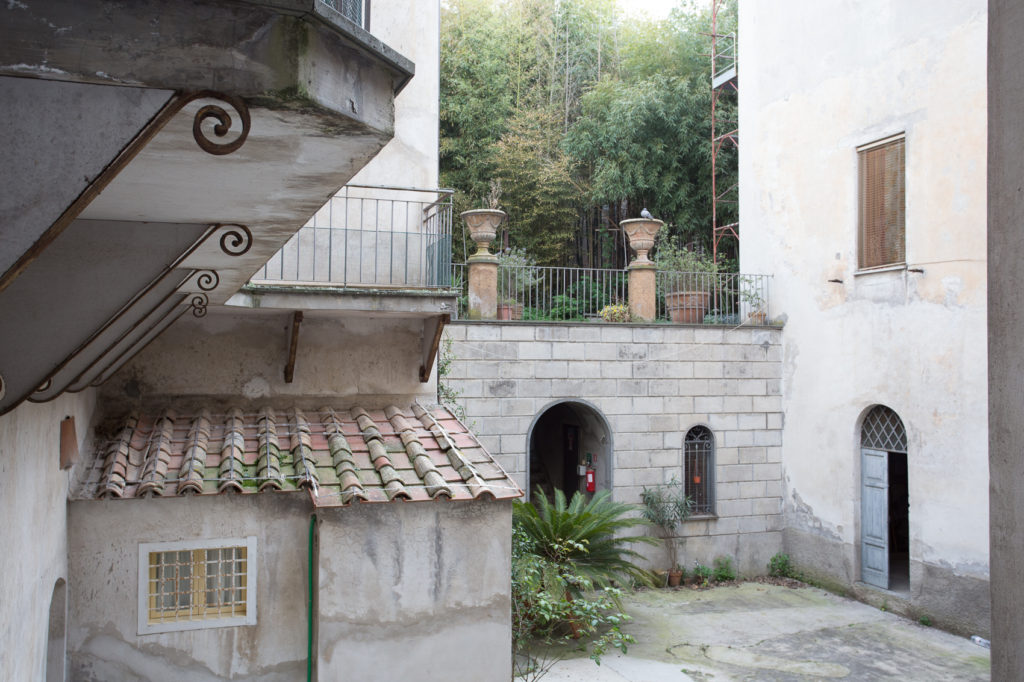
courtyard looking towards the garden terrace
In September 1897 Freud stayed in the Hotel Belle Arti with his younger brother Alexander and patient and pupil Dr Gertl, a rather mysterious figure who disappears without trace a few years later. One wing of the former hotel is now a lawyers’ office, the other, the salon ( in Freud’s day, it was the dining room) has remained largely unchanged.
Here follows an excerpt from The Idler magazine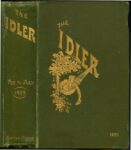 in which W.L.Alden sets the scene in Orvieto a few years before Freud’s visit in 1893, “At the Hotel of the Fine Arts (Belle Arti) where you will inevitably go, you will find three other tourists, probably German, sitting silently in a vast room, waiting for dinner, which is the only thing the tourist does after he has seen the cathedral.” Orvieto offered little to the tourist after dinner, Freud probably wrote letters while his brother Alexander, somewhat of a ladies’ man, could not wait to move on to Rome. However, Freud would refuse to go on this occasion, something akin to a phobia was blocking him. He finally overcome his resistance in 1901, calling his first Roman visit, ‘the high point in my life’.
in which W.L.Alden sets the scene in Orvieto a few years before Freud’s visit in 1893, “At the Hotel of the Fine Arts (Belle Arti) where you will inevitably go, you will find three other tourists, probably German, sitting silently in a vast room, waiting for dinner, which is the only thing the tourist does after he has seen the cathedral.” Orvieto offered little to the tourist after dinner, Freud probably wrote letters while his brother Alexander, somewhat of a ladies’ man, could not wait to move on to Rome. However, Freud would refuse to go on this occasion, something akin to a phobia was blocking him. He finally overcome his resistance in 1901, calling his first Roman visit, ‘the high point in my life’.
Freud embarked on his life’s journey into archeology while on his first visit to Orvieto through his friendship with Riccardo Mancini, proprietor of the Etruscan Necropolis below the walls and a showroom of artifacts found in a long career as an archeologist. It is probable that antique hunting provided the excuse to return to Orvieto on two further occasions, in 1902 and 1907. He may however have revisited old haunts such as the cathedral and Signorelli’s fresco cycle of the end of the world.
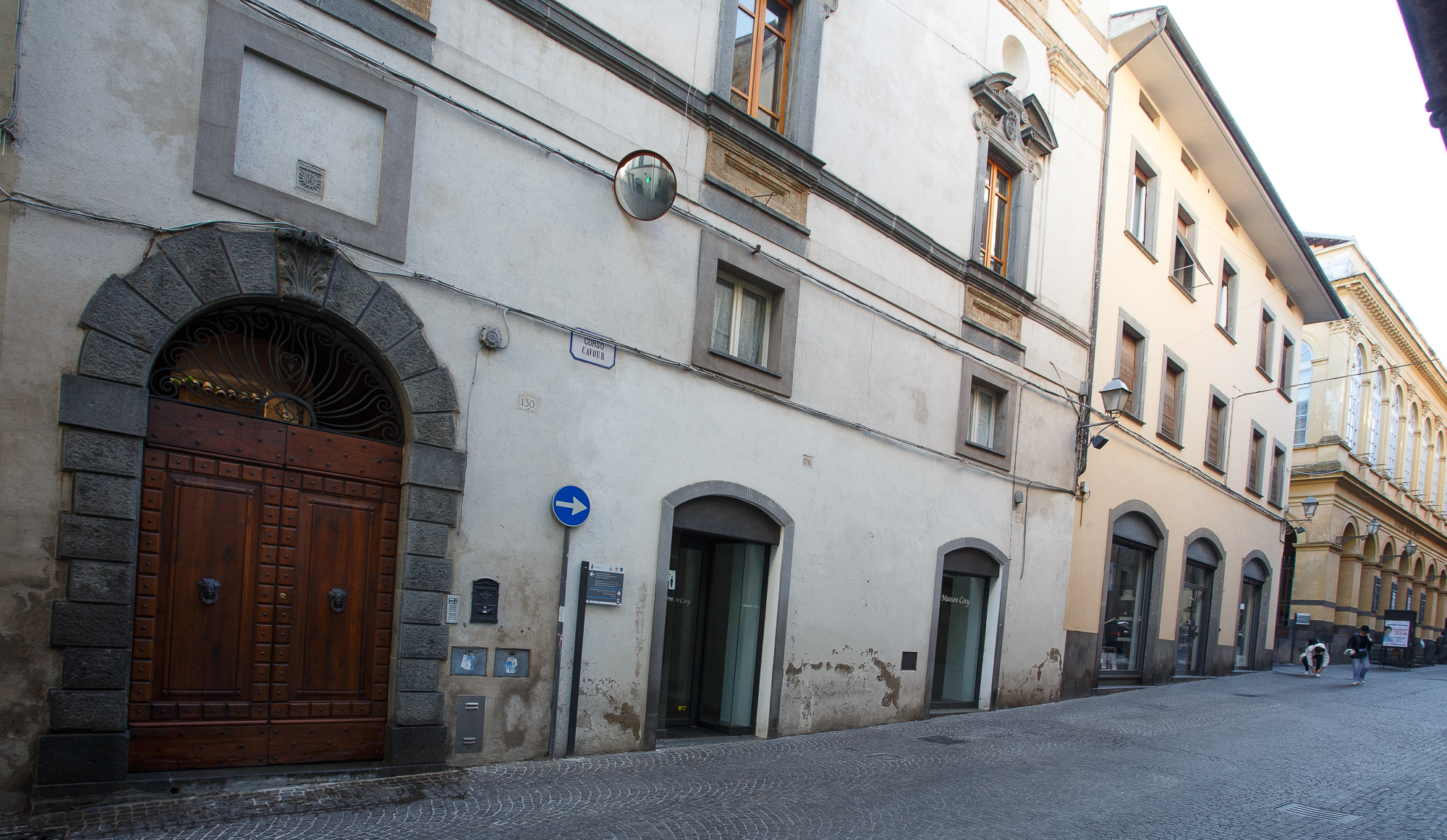
Entrance doorway (left) to Riccardo Mancini's Antiquities Emporium on Corso Cavour. Mancinelli Theatre in the distance. Listed in Baedeker's Guide at N°85, it is now 130.
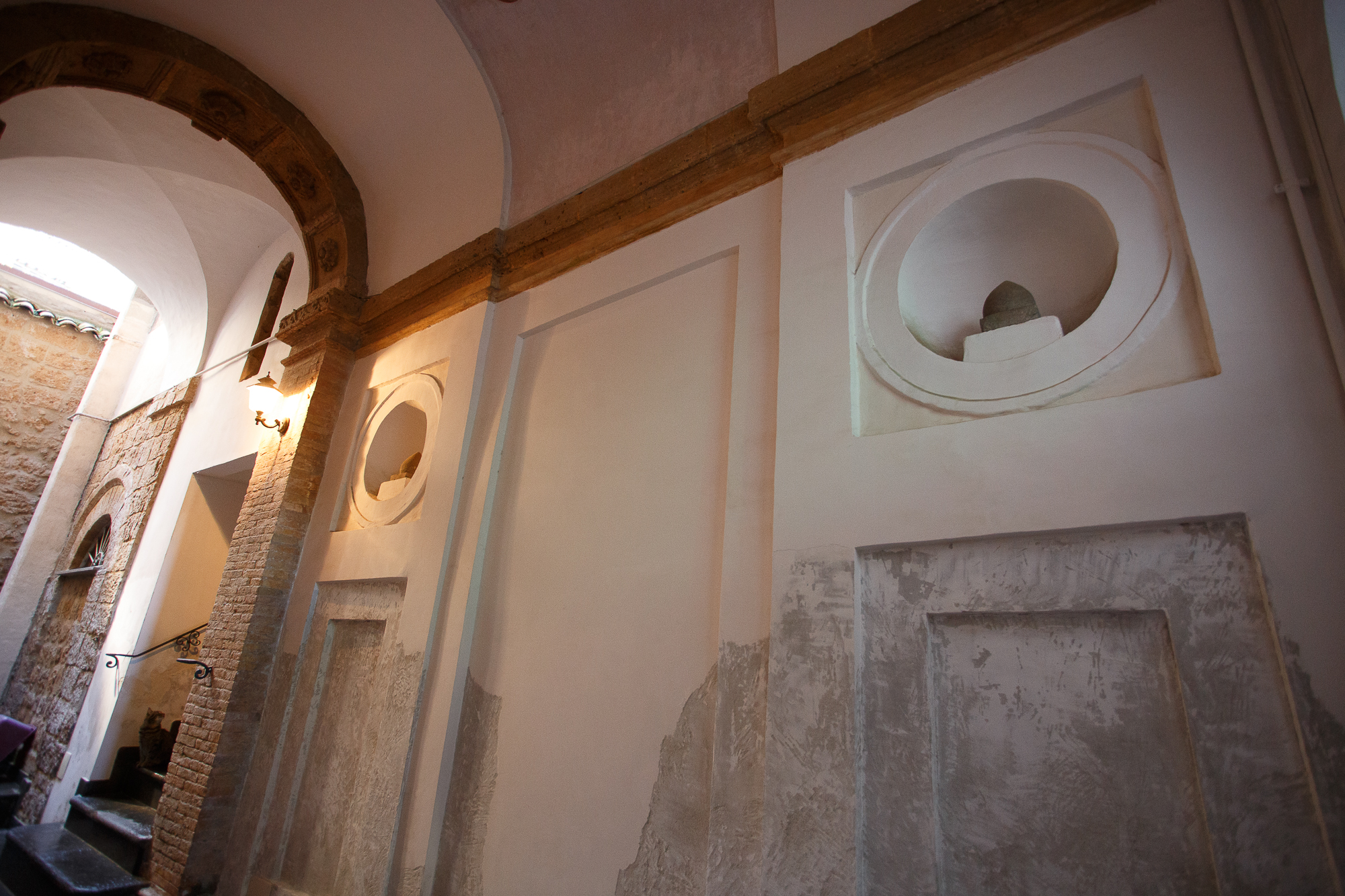
Entrance hall to Mancini's Emporium showing Etruscan funerary 'cippi' in oval niches unearthed by Mancini in the Etruscan Necropolis.
A 15-minute Video on Freud’s visit to Orvieto
More blog posts on this subject of Freud and Orvieto:
Submit your review | |
